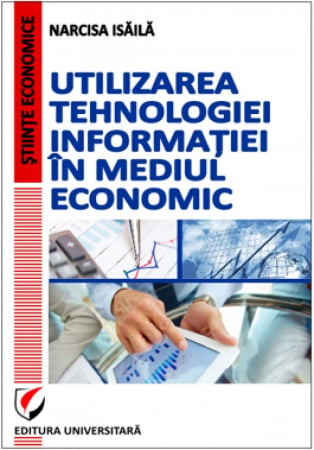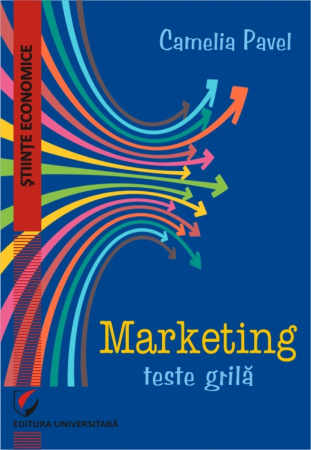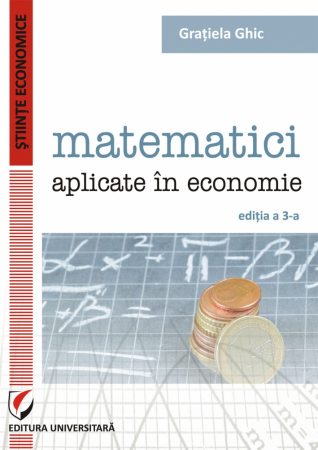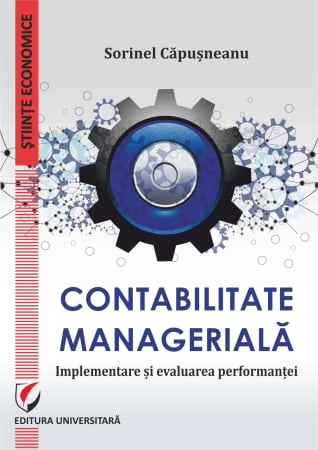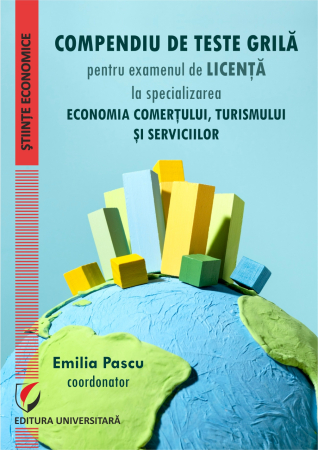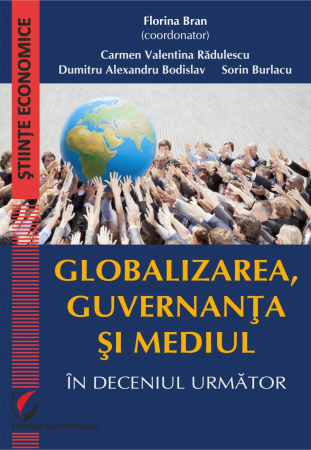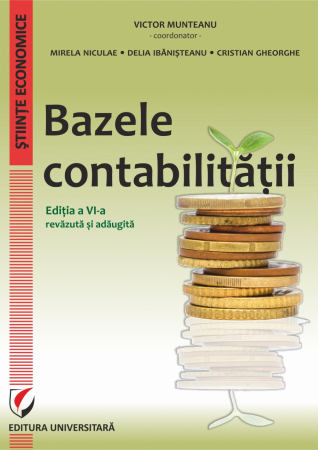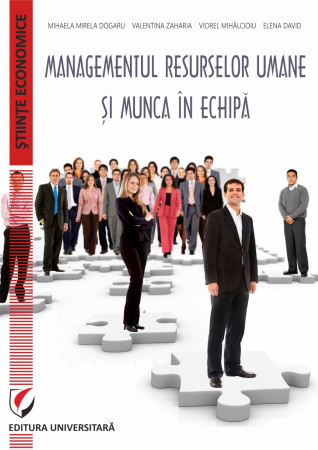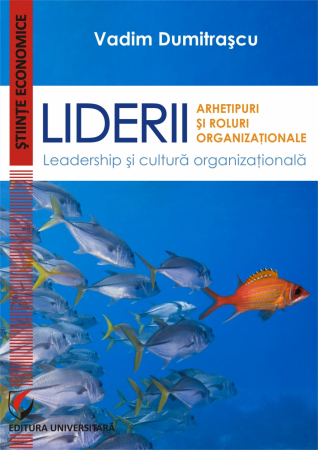Manuscript proposals: [email protected] / 0745 204 115 //// Tracking orders Individuals / Sales: 0745 200 357 / Orders Legal entities: 0721 722 783
ISBN: 978-606-28-0316-2
DOI: 10.5682/ 9786062803162
Publisher year: 2015
Edition: II, revizuita si adaugita
Pages: 360
Publisher: Editura Universitară
Author: Georgeta Ilie
Product Code:
9786062803162
Do you need help?
0745 200 357
- Description
- Download (1)
- Authors
- Content
- More details
- Reviews (0)
The present paper aims to contribute to the understanding of the phenomenon of amplification of international trade flows and to the strengthening of the capacity to analyze economic decisions worldwide from the perspective of their effects on participants in the global value circuit.
Starting from the fact that currently the international trade and financial flows represent the most dynamic components of the world economy, the participation of economic agents in these flows presupposes the knowledge of their determinants in order to efficiently capitalize on existing opportunities and identify risks specific to global business. .
The issue is developed in a logical order, starting from the presentation of conceptual, theoretical and methodological aspects specific to international trade and contemporary trade policies, continuing with the presentation of trends in international trade flows, to new trends of regionalization and globalization and institutionalization of contemporary international trade relations. In the economy of the paper can be identified two main directions, namely, on the one hand, the presentation of the main participants in international trade (national economies and economic agents with foreign trade activities) and, on the other hand, the regulation of relations between them (World Trade Organization). Trade and regional economic integration organizations).
The entire paper is accompanied by a multitude of boxes with additional explanations and practical examples from the realities of international trade and trade policies of countries around the world, including Romania.
Starting from the fact that currently the international trade and financial flows represent the most dynamic components of the world economy, the participation of economic agents in these flows presupposes the knowledge of their determinants in order to efficiently capitalize on existing opportunities and identify risks specific to global business. .
The issue is developed in a logical order, starting from the presentation of conceptual, theoretical and methodological aspects specific to international trade and contemporary trade policies, continuing with the presentation of trends in international trade flows, to new trends of regionalization and globalization and institutionalization of contemporary international trade relations. In the economy of the paper can be identified two main directions, namely, on the one hand, the presentation of the main participants in international trade (national economies and economic agents with foreign trade activities) and, on the other hand, the regulation of relations between them (World Trade Organization). Trade and regional economic integration organizations).
The entire paper is accompanied by a multitude of boxes with additional explanations and practical examples from the realities of international trade and trade policies of countries around the world, including Romania.
-
Comert international si politici comerciale
Download
GEORGETA ILIE
PREFACE / 9
CHAPTER 1. INTERNATIONAL TRADE - CONCEPTUAL APPROACHES / 11
1.1 INTERNATIONAL TRADE / 11
1.2 INTERNATIONAL SPECIALIZATION / 16
1.3 THEORIES REGARDING INTERNATIONAL TRADE / 21
1.4 RECORDING OF TRADE FLOWS IN THE BALANCE OF EXTERNAL PAYMENTS / 29
1.4.1 Balance of external payments / 29
1.4.2 Recording of external trade flows in the balance of external payments / 33
1.4.3 Techniques for balancing and financing the external balance of payments / 36
1.5 INDICATORS OF MEASUREMENT OF THE DEGREE OF INTEGRATION OF A COUNTRY IN INTERNATIONAL TRADE / 41
CHAPTER 2. THE EVOLUTION OF INTERNATIONAL TRADE FLOWS / 49
2.1 EVOLUTION OF THE VALUE VOLUME OF INTERNATIONAL TRADE FLOWS / 49
2.2 STRUCTURAL CHANGES IN THE EVOLUTION OF INTERNATIONAL TRADE / 50
2.3 FACTORS OF INFLUENCE ON THE EVOLUTION OF INTERNATIONAL TRADE / 52
2.4 PARTICIPATION OF WORLD COUNTRIES IN INTERNATIONAL TRADE / 58
2.5 INTRA AND INTER-REGIONAL TRADE FLOWS / 63
2.6 THE ROLE OF THE TRIAD IN CONTEMPORARY INTERNATIONAL TRADE / 65
2.7 THE ROLE OF BRICS IN CONTEMPORARY INTERNATIONAL TRADE / 69
CHAPTER 3. TRADE POLICIES - GENERAL APPROACHES / 73
3.1 COMMERCIAL POLICY - CONCEPT, OBJECTIVES, FUNCTIONS / 73
3.2 MAIN FACTORS OF INFLUENCE OF INTERNATIONAL TRADE AND TRADE POLICIES / 75
3.3 TRADE POLICY INSTRUMENTS / 77
3.4 TYPES OF TRADE POLICIES / 79
3.4.1 Free trade / 79
3.4.2 Trade protectionism / 80
3.4.3 Arguments supporting the choice of trade policy / 80
3.4.4 Other types of trade policies / 82
3.5 LIBERALISM VERSUS PROTECTIONISM IN CONTEMPORARY TRADE POLICIES / 84
CHAPTER 4. INSTRUMENTS SPECIFIC TO IMPACTING TRADE POLICY / 92
4.1 TARIFF POLICY SPECIFIC INSTRUMENTS / 92
4.1.1 Tariff policy - objectives, instruments, functions / 92
4.1.2 Customs Tariff / 95
4.1.3 Customs duties - their purpose and object / 100
4.1.4 How to collect and how to establish customs duties / 104
4.1.5 Determining the origin of goods subject to customs duties / 111
4.1.6 The protectionist effect of customs duties / 112
4.1.7 Benefits and costs of customs taxation / 115
4.1.8 Customs territory. Forms of its extension and restriction / 116
4.2 INSTRUMENTS SPECIFIC TO NON - TARIFF TRADE POLICY / 132
4.2.1 Non-tariff policy - conceptual approaches and characteristics / 132
4.2.2 Quantitative restrictions on imports / 134
4.2.3 Limitation of imports through the price mechanism / 147
4.2.4 Customs and administrative formalities applicable to imports / 154
4.2.5 State involvement in international trade activities / 156
4.2.6 Standards applied to imported products / 163
4.2.7 The impact of non - tariff protectionism on international trade / 168
CHAPTER 5. INSTRUMENTS FOR EXPORT PROMOTION AND STIMULATION / 171
5.1 EXPORT PROMOTION TOOLS / 171
5.1.1 Defining elements of the export promotion policy at macroeconomic level / 171
5.1.2 National export promotion organizations / 174
5.1.3 The role of international fairs and exhibitions in export promotion / 182
5.1.4 Agencies and commercial representatives abroad / 184
5.1.5 Chambers of Commerce and Industry / 185
5.1.6 International trade treaties and agreements / 187
5.2 EXPORT STIMULATION INSTRUMENTS / 191
5.2.1 Export subsidies / 191
5.2.2 Fiscal facilities for stimulating exports / 193
5.2.3 Export credits to stimulate exports / 195
5.2.4 Devaluation of the national currency in order to stimulate exports / 199
CHAPTER 6. REGIONAL ECONOMIC INTEGRATION AND ITS IMPACTS ON INTERNATIONAL TRADE / 201
6.1 THE PROCESS OF REGIONAL ECONOMIC INTEGRATION / 201
6.2 REGIONALISM VERSUS MULTILATERALISM IN INTERNATIONAL TRADE / 209
6.3 REGIONAL ECONOMIC INTEGRATION IN VIEW OF THE WORLD TRADE ORGANIZATION / 212
6.4 ECONOMIC INTEGRATION IN WESTERN EUROPE / 216
6.4.1 European Union / 216
6.4.2 European Free Trade Association / 225
6.5 ECONOMIC INTEGRATION IN NORTH AMERICA / 227
6.5.1 Auto Pact / 227
6.5.2 US-Canada Free Trade Agreement / 227
6.5.3 North American Free Trade Agreement (NAFTA) / 228
6.5.4 Free Trade Area of the Americas / 237
6.6 ECONOMIC INTEGRATION IN CENTRAL AND SOUTH AMERICA / 239
6.6.1 Caribbean Common Market (CARICOM) / 239
6.6.2 Latin American Integration Association (ALADI) / 239
6.6.3 Southern Common Market (MERCOSUR) / 240
6.6.4 Andean Community / 242
6.7 THE PROCESS OF REGIONAL ECONOMIC INTEGRATION IN THE ASIA AREA - PACIFIC / 246
6.7.1 United Nations Association for South-East Asia (ASEAN) / 246
6.7.2 Asia-Pacific Cooperation Forum (APEC) / 248
CHAPTER 7. THE ROLE OF THE WORLD TRADE ORGANIZATION IN THE REGULATION OF INTERNATIONAL TRADE / 252
7.1 BRIEF HISTORY OF THE OCCASION OF THE WORLD TRADE ORGANIZATION / 252
7.2 THE OBJECTIVES OF THE WORLD TRADE ORGANIZATION / 255
7.3 BRINGING BUSINESS TO THE BOARD OF THE ORGANIZATION WORLD TRADE / 258
7.4 CONTINUITY AND NOVELTY OF THE WORLD TRADE ORGANIZATION / 259
7.5 ORGANIZATIONAL STRUCTURE OF THE WORLD TRADE ORGANIZATION / 260
7.6 FUNDAMENTAL PRINCIPLES OF THE WORLD TRADE ORGANIZATION / 263
7.6.1 The principle of non-discrimination in mutual commercial relations / 264
7.6.2 The principle of reciprocity / 265
7.6.3 The principle of the obligation of the assumed commitments / 266
7.6.4 The principle of transparency / 267
7.6.5 The principle of safeguarding / 267
7.7 EXCEPTIONS AND DEROGATIONS FROM THE FUNDAMENTAL PRINCIPLES OF THE WTO / 268
7.8 CONDUCT OF NEGOTIATIONS IN THE WORLD TRADE ORGANIZATION / 269
7.9 THE PLACE OF DEVELOPING COUNTRIES IN THE WORLD TRADE ORGANIZATION / 274
7.10 RESULTS OF ROUNDS OF COMMERCIAL NEGOTIATIONS / 275
7.11 URUGUAY ROUND AND ITS ROLE IN CREATING WTO / 279
7.12 COOPERATION OF THE WORLD TRADE ORGANIZATION WITH OTHER INTERNATIONAL ORGANIZATIONS / 286
CHAPTER 8. RESULTS OF THE ACTIVITY OF THE WORLD TRADE ORGANIZATION / 289
8.1 RESULTS OF THE MINISTERIAL CONFERENCES OF THE WORLD TRADE ORGANIZATION / 289
8.1.1 WTO Ministerial Conferences during 1996-2011 / 289
8.1.2 WTO Ministerial Conference in Bali (2013) / 296
8.2 ROUND DOHA (MILLENNIUM ROUND) / 302
8.3 THE INTERNATIONAL TRADE SYSTEM UNDER THE IMPERATIVES OF THE WORLD ECONOMIC CONNECTION AND THE DOHA ROUND / 309
CHAPTER 9. MAIN REGULATIONS ADOPTED BY THE WORLD TRADE ORGANIZATION / 314
9.1 REGULATION OF COMMERCIAL DEFENSE ASPECTS / 314
9.1.1 Regulation of anti-dumping policies / 314
9.1.2 Regulation of policies on export subsidies and countervailing duties / 317
9.1.3 Regulation of the application of safeguard measures / 320
9.2 REGULATION OF SECTORAL TRADE POLICIES / 325
9.2.1 Regulation of trade policies applicable to international trade in agricultural products / 325
9.2.2 Regulation of trade policies applicable to international trade in textiles and clothing / 329
9.3 REGULATIONS ON SPECIFIC ASPECTS OF CUSTOMS POLICY, IN ACCORDANCE WITH WTO AGREEMENTS / 332
9.3.1 Regulation of the evaluation of goods in customs / 332
9.3.2 Regulation of inspection before shipment of goods to foreign markets / 334
9.3.3 Regulation of establishing the origin of goods / 335
9.3.4 Regulation of import licensing procedures / 337
9.3.5 Regulation of the creation and functioning of customs unions and free trade zones / 340
9.3.6 Regulation of government procurement / 340
9.4 INTERNATIONAL TRADE REGULATIONS WITH REGARD TO TRADE POLICIES / 341
9.4.1 Regulation of measures aimed at investments related to trade / 341
9.4.2 Regulation of international trade in services / 343
9.4.3 Regulation of commercial aspects of intellectual property rights / 347
9.4.4 Settlement of international trade disputes / 351
9.4.5 Regulating the examination of trade policies of WTO member countries / 353
SELECTIVE BIBLIOGRAPHY / 356
CHAPTER 1. INTERNATIONAL TRADE - CONCEPTUAL APPROACHES / 11
1.1 INTERNATIONAL TRADE / 11
1.2 INTERNATIONAL SPECIALIZATION / 16
1.3 THEORIES REGARDING INTERNATIONAL TRADE / 21
1.4 RECORDING OF TRADE FLOWS IN THE BALANCE OF EXTERNAL PAYMENTS / 29
1.4.1 Balance of external payments / 29
1.4.2 Recording of external trade flows in the balance of external payments / 33
1.4.3 Techniques for balancing and financing the external balance of payments / 36
1.5 INDICATORS OF MEASUREMENT OF THE DEGREE OF INTEGRATION OF A COUNTRY IN INTERNATIONAL TRADE / 41
CHAPTER 2. THE EVOLUTION OF INTERNATIONAL TRADE FLOWS / 49
2.1 EVOLUTION OF THE VALUE VOLUME OF INTERNATIONAL TRADE FLOWS / 49
2.2 STRUCTURAL CHANGES IN THE EVOLUTION OF INTERNATIONAL TRADE / 50
2.3 FACTORS OF INFLUENCE ON THE EVOLUTION OF INTERNATIONAL TRADE / 52
2.4 PARTICIPATION OF WORLD COUNTRIES IN INTERNATIONAL TRADE / 58
2.5 INTRA AND INTER-REGIONAL TRADE FLOWS / 63
2.6 THE ROLE OF THE TRIAD IN CONTEMPORARY INTERNATIONAL TRADE / 65
2.7 THE ROLE OF BRICS IN CONTEMPORARY INTERNATIONAL TRADE / 69
CHAPTER 3. TRADE POLICIES - GENERAL APPROACHES / 73
3.1 COMMERCIAL POLICY - CONCEPT, OBJECTIVES, FUNCTIONS / 73
3.2 MAIN FACTORS OF INFLUENCE OF INTERNATIONAL TRADE AND TRADE POLICIES / 75
3.3 TRADE POLICY INSTRUMENTS / 77
3.4 TYPES OF TRADE POLICIES / 79
3.4.1 Free trade / 79
3.4.2 Trade protectionism / 80
3.4.3 Arguments supporting the choice of trade policy / 80
3.4.4 Other types of trade policies / 82
3.5 LIBERALISM VERSUS PROTECTIONISM IN CONTEMPORARY TRADE POLICIES / 84
CHAPTER 4. INSTRUMENTS SPECIFIC TO IMPACTING TRADE POLICY / 92
4.1 TARIFF POLICY SPECIFIC INSTRUMENTS / 92
4.1.1 Tariff policy - objectives, instruments, functions / 92
4.1.2 Customs Tariff / 95
4.1.3 Customs duties - their purpose and object / 100
4.1.4 How to collect and how to establish customs duties / 104
4.1.5 Determining the origin of goods subject to customs duties / 111
4.1.6 The protectionist effect of customs duties / 112
4.1.7 Benefits and costs of customs taxation / 115
4.1.8 Customs territory. Forms of its extension and restriction / 116
4.2 INSTRUMENTS SPECIFIC TO NON - TARIFF TRADE POLICY / 132
4.2.1 Non-tariff policy - conceptual approaches and characteristics / 132
4.2.2 Quantitative restrictions on imports / 134
4.2.3 Limitation of imports through the price mechanism / 147
4.2.4 Customs and administrative formalities applicable to imports / 154
4.2.5 State involvement in international trade activities / 156
4.2.6 Standards applied to imported products / 163
4.2.7 The impact of non - tariff protectionism on international trade / 168
CHAPTER 5. INSTRUMENTS FOR EXPORT PROMOTION AND STIMULATION / 171
5.1 EXPORT PROMOTION TOOLS / 171
5.1.1 Defining elements of the export promotion policy at macroeconomic level / 171
5.1.2 National export promotion organizations / 174
5.1.3 The role of international fairs and exhibitions in export promotion / 182
5.1.4 Agencies and commercial representatives abroad / 184
5.1.5 Chambers of Commerce and Industry / 185
5.1.6 International trade treaties and agreements / 187
5.2 EXPORT STIMULATION INSTRUMENTS / 191
5.2.1 Export subsidies / 191
5.2.2 Fiscal facilities for stimulating exports / 193
5.2.3 Export credits to stimulate exports / 195
5.2.4 Devaluation of the national currency in order to stimulate exports / 199
CHAPTER 6. REGIONAL ECONOMIC INTEGRATION AND ITS IMPACTS ON INTERNATIONAL TRADE / 201
6.1 THE PROCESS OF REGIONAL ECONOMIC INTEGRATION / 201
6.2 REGIONALISM VERSUS MULTILATERALISM IN INTERNATIONAL TRADE / 209
6.3 REGIONAL ECONOMIC INTEGRATION IN VIEW OF THE WORLD TRADE ORGANIZATION / 212
6.4 ECONOMIC INTEGRATION IN WESTERN EUROPE / 216
6.4.1 European Union / 216
6.4.2 European Free Trade Association / 225
6.5 ECONOMIC INTEGRATION IN NORTH AMERICA / 227
6.5.1 Auto Pact / 227
6.5.2 US-Canada Free Trade Agreement / 227
6.5.3 North American Free Trade Agreement (NAFTA) / 228
6.5.4 Free Trade Area of the Americas / 237
6.6 ECONOMIC INTEGRATION IN CENTRAL AND SOUTH AMERICA / 239
6.6.1 Caribbean Common Market (CARICOM) / 239
6.6.2 Latin American Integration Association (ALADI) / 239
6.6.3 Southern Common Market (MERCOSUR) / 240
6.6.4 Andean Community / 242
6.7 THE PROCESS OF REGIONAL ECONOMIC INTEGRATION IN THE ASIA AREA - PACIFIC / 246
6.7.1 United Nations Association for South-East Asia (ASEAN) / 246
6.7.2 Asia-Pacific Cooperation Forum (APEC) / 248
CHAPTER 7. THE ROLE OF THE WORLD TRADE ORGANIZATION IN THE REGULATION OF INTERNATIONAL TRADE / 252
7.1 BRIEF HISTORY OF THE OCCASION OF THE WORLD TRADE ORGANIZATION / 252
7.2 THE OBJECTIVES OF THE WORLD TRADE ORGANIZATION / 255
7.3 BRINGING BUSINESS TO THE BOARD OF THE ORGANIZATION WORLD TRADE / 258
7.4 CONTINUITY AND NOVELTY OF THE WORLD TRADE ORGANIZATION / 259
7.5 ORGANIZATIONAL STRUCTURE OF THE WORLD TRADE ORGANIZATION / 260
7.6 FUNDAMENTAL PRINCIPLES OF THE WORLD TRADE ORGANIZATION / 263
7.6.1 The principle of non-discrimination in mutual commercial relations / 264
7.6.2 The principle of reciprocity / 265
7.6.3 The principle of the obligation of the assumed commitments / 266
7.6.4 The principle of transparency / 267
7.6.5 The principle of safeguarding / 267
7.7 EXCEPTIONS AND DEROGATIONS FROM THE FUNDAMENTAL PRINCIPLES OF THE WTO / 268
7.8 CONDUCT OF NEGOTIATIONS IN THE WORLD TRADE ORGANIZATION / 269
7.9 THE PLACE OF DEVELOPING COUNTRIES IN THE WORLD TRADE ORGANIZATION / 274
7.10 RESULTS OF ROUNDS OF COMMERCIAL NEGOTIATIONS / 275
7.11 URUGUAY ROUND AND ITS ROLE IN CREATING WTO / 279
7.12 COOPERATION OF THE WORLD TRADE ORGANIZATION WITH OTHER INTERNATIONAL ORGANIZATIONS / 286
CHAPTER 8. RESULTS OF THE ACTIVITY OF THE WORLD TRADE ORGANIZATION / 289
8.1 RESULTS OF THE MINISTERIAL CONFERENCES OF THE WORLD TRADE ORGANIZATION / 289
8.1.1 WTO Ministerial Conferences during 1996-2011 / 289
8.1.2 WTO Ministerial Conference in Bali (2013) / 296
8.2 ROUND DOHA (MILLENNIUM ROUND) / 302
8.3 THE INTERNATIONAL TRADE SYSTEM UNDER THE IMPERATIVES OF THE WORLD ECONOMIC CONNECTION AND THE DOHA ROUND / 309
CHAPTER 9. MAIN REGULATIONS ADOPTED BY THE WORLD TRADE ORGANIZATION / 314
9.1 REGULATION OF COMMERCIAL DEFENSE ASPECTS / 314
9.1.1 Regulation of anti-dumping policies / 314
9.1.2 Regulation of policies on export subsidies and countervailing duties / 317
9.1.3 Regulation of the application of safeguard measures / 320
9.2 REGULATION OF SECTORAL TRADE POLICIES / 325
9.2.1 Regulation of trade policies applicable to international trade in agricultural products / 325
9.2.2 Regulation of trade policies applicable to international trade in textiles and clothing / 329
9.3 REGULATIONS ON SPECIFIC ASPECTS OF CUSTOMS POLICY, IN ACCORDANCE WITH WTO AGREEMENTS / 332
9.3.1 Regulation of the evaluation of goods in customs / 332
9.3.2 Regulation of inspection before shipment of goods to foreign markets / 334
9.3.3 Regulation of establishing the origin of goods / 335
9.3.4 Regulation of import licensing procedures / 337
9.3.5 Regulation of the creation and functioning of customs unions and free trade zones / 340
9.3.6 Regulation of government procurement / 340
9.4 INTERNATIONAL TRADE REGULATIONS WITH REGARD TO TRADE POLICIES / 341
9.4.1 Regulation of measures aimed at investments related to trade / 341
9.4.2 Regulation of international trade in services / 343
9.4.3 Regulation of commercial aspects of intellectual property rights / 347
9.4.4 Settlement of international trade disputes / 351
9.4.5 Regulating the examination of trade policies of WTO member countries / 353
SELECTIVE BIBLIOGRAPHY / 356
The present paper aims to contribute to the understanding of the phenomenon of amplification of international trade flows and to the strengthening of the capacity to analyze economic decisions worldwide from the perspective of their effects on participants in the global value circuit.
Starting from the fact that currently the international trade and financial flows represent the most dynamic components of the world economy, the participation of economic agents in these flows presupposes the knowledge of their determinants in order to efficiently capitalize on existing opportunities and identify risks specific to global business. .
The issue is developed in a logical order, starting from the presentation of conceptual, theoretical and methodological aspects specific to international trade and contemporary trade policies, continuing with the presentation of trends in international trade flows, to new trends of regionalization and globalization and institutionalization of contemporary international trade relations. In the economy of the paper can be identified two main directions, namely, on the one hand, the presentation of the main participants in international trade (national economies and economic agents with foreign trade activities) and, on the other hand, the regulation of relations between them (World Trade Organization). Trade and regional economic integration organizations).
The first chapter is intended to be more than a brief presentation of the basic notions specific to international trade. Thus, the presented problem tries to outline some answers to questions such as: what is meant by international trade, who are the participants in contemporary trade, what are the notions associated with it (eg international specialization), what are the theories formulated over time in explaining this phenomenon. Also here are analyzed the means of quantification and registration of trade flows, as well as aspects regarding the measurement of the intensity and efficiency of the activity of the participants in the international trade.
The second chapter focuses on identifying the main trends in the evolution of international trade flows. The dynamics of international trade flows, presented from a statistical point of view, is complemented by explanations regarding the influencing factors and their effects on the well-being of the countries of the world. Also, aspects related to the role of the main players in contemporary international trade relations are considered, namely the Triad countries (USA, EU, Japan) and the BRICS countries (Brazil, Russian Federation, India, People's Republic of China and Republic of South Africa).
Chapters three, four and five deal with issues specific to trade policy issues and their instruments. The issue presented in Chapter Three seeks to clarify notions such as the significance of trade policies, their objectives, the role of transnational corporations in developing trade policy instruments. The central place in this chapter is held by the typology of trade policies, in which case theoretical aspects are presented accompanied by a series of examples on free trade and protectionist trade policies. The following two chapters represent the basic nucleus of the trade policy issue, concentrating the main trade policy instruments, namely: tariff and non-tariff instruments applicable mainly to imports and instruments for promoting and stimulating exports. Throughout these chapters, the theoretical-explanatory issue is doubled by a multitude of boxes with additional explanations and practical examples from the realities of international trade and trade policies of world countries, including Romania.
Chapter six considers aspects of regionalization of trade. The theoretical aspects regarding the issue of the phenomenon of regional integration are doubled by presentations of the main regional economic integration groups, namely: the European Union and the European Free Trade Association, for Europe; North American Free Trade Agreement for North America; MERCOSUR market for Latin America, Asia-Pacific Cooperation Forum, for Asia and others.
The institutionalization of the international trade system is the subject of chapters seven, eight and nine, in which the aspects specific to the activity of the World Trade Organization (WTO) are presented and analyzed. Thus, in chapter seven, after presenting the context of the emergence of the WTO, are considered aspects of the main provisions of the WTO, including: objectives, fundamental principles, aspects of negotiations, the position of developing countries and within the WTO, WTO cooperation with other international organizations. Chapters eight and nine present the results of the first WTO ministerial conferences, including the main results of WTO work.
The entire paper is accompanied by a multitude of boxes with additional explanations and practical examples from the realities of international trade and trade policies of countries around the world, including Romania.
November 2015
Georgeta ILIE
Starting from the fact that currently the international trade and financial flows represent the most dynamic components of the world economy, the participation of economic agents in these flows presupposes the knowledge of their determinants in order to efficiently capitalize on existing opportunities and identify risks specific to global business. .
The issue is developed in a logical order, starting from the presentation of conceptual, theoretical and methodological aspects specific to international trade and contemporary trade policies, continuing with the presentation of trends in international trade flows, to new trends of regionalization and globalization and institutionalization of contemporary international trade relations. In the economy of the paper can be identified two main directions, namely, on the one hand, the presentation of the main participants in international trade (national economies and economic agents with foreign trade activities) and, on the other hand, the regulation of relations between them (World Trade Organization). Trade and regional economic integration organizations).
The first chapter is intended to be more than a brief presentation of the basic notions specific to international trade. Thus, the presented problem tries to outline some answers to questions such as: what is meant by international trade, who are the participants in contemporary trade, what are the notions associated with it (eg international specialization), what are the theories formulated over time in explaining this phenomenon. Also here are analyzed the means of quantification and registration of trade flows, as well as aspects regarding the measurement of the intensity and efficiency of the activity of the participants in the international trade.
The second chapter focuses on identifying the main trends in the evolution of international trade flows. The dynamics of international trade flows, presented from a statistical point of view, is complemented by explanations regarding the influencing factors and their effects on the well-being of the countries of the world. Also, aspects related to the role of the main players in contemporary international trade relations are considered, namely the Triad countries (USA, EU, Japan) and the BRICS countries (Brazil, Russian Federation, India, People's Republic of China and Republic of South Africa).
Chapters three, four and five deal with issues specific to trade policy issues and their instruments. The issue presented in Chapter Three seeks to clarify notions such as the significance of trade policies, their objectives, the role of transnational corporations in developing trade policy instruments. The central place in this chapter is held by the typology of trade policies, in which case theoretical aspects are presented accompanied by a series of examples on free trade and protectionist trade policies. The following two chapters represent the basic nucleus of the trade policy issue, concentrating the main trade policy instruments, namely: tariff and non-tariff instruments applicable mainly to imports and instruments for promoting and stimulating exports. Throughout these chapters, the theoretical-explanatory issue is doubled by a multitude of boxes with additional explanations and practical examples from the realities of international trade and trade policies of world countries, including Romania.
Chapter six considers aspects of regionalization of trade. The theoretical aspects regarding the issue of the phenomenon of regional integration are doubled by presentations of the main regional economic integration groups, namely: the European Union and the European Free Trade Association, for Europe; North American Free Trade Agreement for North America; MERCOSUR market for Latin America, Asia-Pacific Cooperation Forum, for Asia and others.
The institutionalization of the international trade system is the subject of chapters seven, eight and nine, in which the aspects specific to the activity of the World Trade Organization (WTO) are presented and analyzed. Thus, in chapter seven, after presenting the context of the emergence of the WTO, are considered aspects of the main provisions of the WTO, including: objectives, fundamental principles, aspects of negotiations, the position of developing countries and within the WTO, WTO cooperation with other international organizations. Chapters eight and nine present the results of the first WTO ministerial conferences, including the main results of WTO work.
The entire paper is accompanied by a multitude of boxes with additional explanations and practical examples from the realities of international trade and trade policies of countries around the world, including Romania.
November 2015
Georgeta ILIE
If you want to express your opinion about this product you can add a review.
write a review

6359.png)
![International Trade and Trade Policy [1] International Trade and Trade Policy [1]](https://gomagcdn.ro/domains/editurauniversitara.ro/files/product/large/comert-international-si-politici-comerciale-682-265899.jpg)

